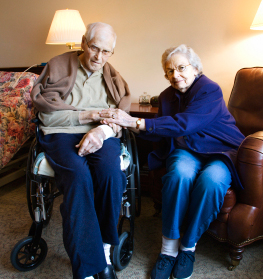R
It never was. If Roy and Winifred drove in only briefly to deliver their shopping their landlord promptly sent them threatening letters, upbraiding them for doing this. So, on Roy’s increasingly frequent bad days, when he was scarcely able to breathe, they were confined to the house. Their whole lives became dominated by this apparently simple parking problem.
Eventually they were put in touch with an advocate, Pauline. She began to unravel the problem. Despite the refusal of management to provide any information about it,she researched three years of planning files, arranged meetings with landlords, spoke to the Roads Department, to community representatives, to local councillors, the MSP – who all hoped that the matter could be resolved by an amended planning application that would permit the car to use the space already provided. But Pauline discovered there was a problem about the application – it would never be accepted because the sight lines at the entrance to the project were obscured by a few trees in a neighbouring garden whose owner was not prepared to fell them unless he was compensated for the’ loss of amenity’ that he would suffer.
Eventually a plan Pauline had long been trying to negotiate took shape. Communities Scotland, through which the government funds housing associations, found the money to compensate the neighbour. The trees were felled, a new planning application was approved, minor building works were completed and a white line painted on the edge of the highway to prevent cars parking outside the gates. (That took a few months more). Finally after two years of arguments, Roy was able to drive his car into the disabled parking bay at his front door.
Speaking to Power – advocacy for health and social care’
David Donnison
The Policy Press 2009
Note: Whilst this is a true story, all names and images have been changed in the interests of privacy.

